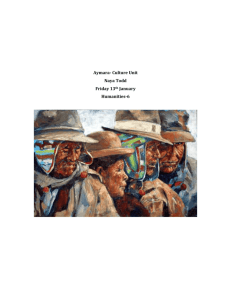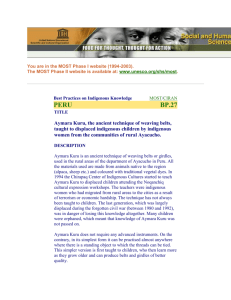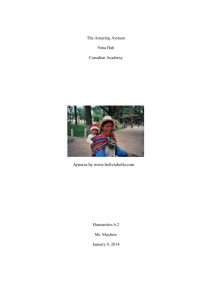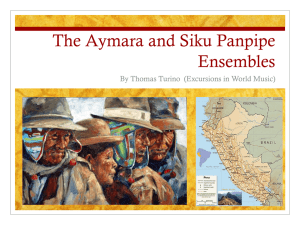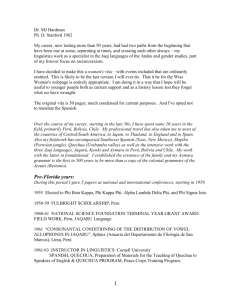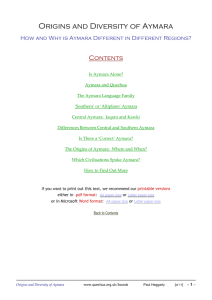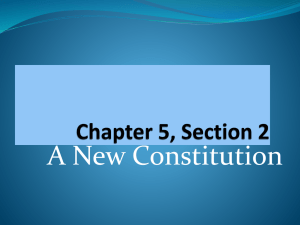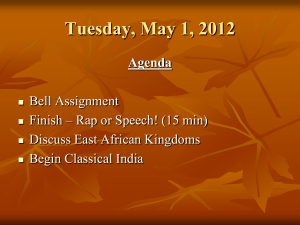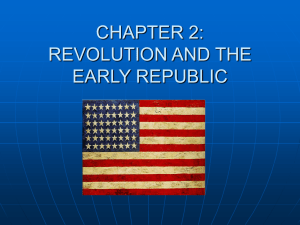Bolivia and the Aymara Group 6
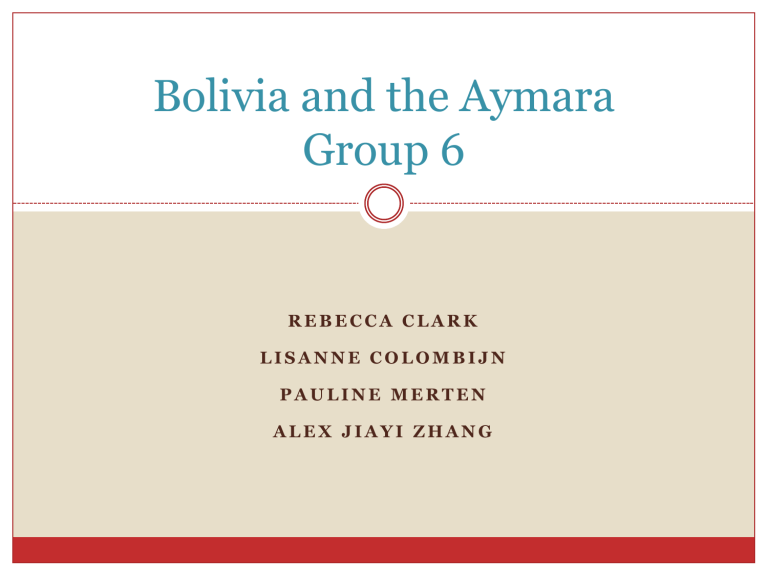
Bolivia and the Aymara
Group 6
R E B E C C A C L A R K
L I S A N N E C O L O M B I J N
P A U L I N E M E R T E N
A L E X J I A Y I Z H A N G
Table of Content
Introduction
History of the Aymara
Situation Today
Constitution of the Aymara Body
Bolivian Constitution of 2009
Conclusion
History of the Aymara
-
-
-
600 B.C. – 1200: Andean Empire of the Tiahuanacan
13 th century: the rise of seven regional kingdoms of the Aymara
15 th century: Incas conquered the kingdoms of the
Aymara
Incas did not change the organization of the Kingdoms
Aymara were able to retain their culture, religion and language
History of the Aymara
History of the Aymara
16 th century: Spanish discovery and conquest of the
Inca Empire
Christianization of the Indians
Systematic exploitation of the
Aymara in agriculture, mines and on the coca plantations
History of the Aymara
18 th + 19 th century: rebellion against the conqueror and Peruvian Independence from the
Spanish crown
1952: civil rights for the Aymara
Situation Today
Bolivia
50 % - 50 %
Aymara, 2 million
Situation of Today
Agricultural, fishing, handy craft, trade, mining, cattle ranching
Supernatural phenomena
Death and afterlife
Clothes
Constitution of the Aymara Body
Education
Language
Agriculture
Right to Identify
Political Representation
Environmental Rights
Religious Freedoms
Freedom from Racial Discrimination
Bolivian Constitution of 2009
Indian nations
Positive influence on the Aymaras
Indigenous people no longer invisible
